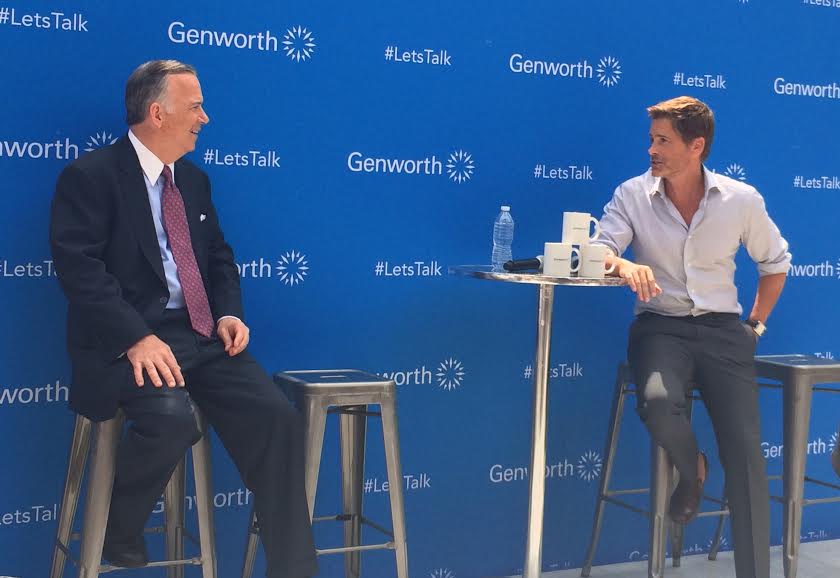“I wrote this review while participating in a campaign for Mom Central Consulting on behalf of Genworth. I attended a live event and received a promotional item to thank me for participating.”
None of us want to admit that we’re getting older. At 33 I see a lot more babies and weddings instead of drunken selfies on my Facebook feed. The scary fact? 65 is considered the age of retirement – aka OLD. F. I am about half way there already. If that wasn’t depressing enough to start your day, long term care isn’t exactly cheap. So now we have to plan to save for college, a house, retirement AND for our parent’s long term care? I hope my boss wants to give me a raise. And I hope Maximo knows he’ll be housing me up until the age of 175.


Too many Americans don’t know they’ve made incorrect and costly assumptions about long term care, so Genworth launched the “Let’s Talk” campaign to encourage America to ask the hard questions and discuss the tough issues they’re grappling with – because the answers are often surprising.
Did I mention Rob Lowe was there with us?

“I’m excited to help kick-off Genworth’s #LetsTalk Tour, an initiative to help families start the conversation around long term care planning,” says Lowe. “The timing couldn’t be more perfect, as long term care is the most overlooked health and retirement security issue facing Americans today. As a father of two, I know there’s a definite need to have these sometimes awkward family conversations and more importantly, having them now versus later.”
Scary Facts
The United States is undergoing a profound demographic change – every day, over 10,000 Americans turn 65[i], so that during the next forty years, the U.S. population over 65 will double[ii], and the population over 85 will triple[iii].
Insurance doesn’t cover long term care. It only covers medical expenses that may arrise (and even those are questionable).
So – how do we deal with the fact that YES, we will get old, our parents are getting older, and well – who is going to take care of us? Will we have saved up enough money for retirement? We’ve all seen those photos of old ladies buying (and eating) cat food…..**shutter**
How much does long term care cost?

Unfortunately, quite a lot. Though costs vary by location, national averages give a sense of what to expect. The Genworth Cost of Care Study is a great source of information. (Found at www.genworth.com or get the App.) Services at an adult day health care center cost more than $16,000 a year. One year of home health aide services costs, on average, more than $45,000. (That’s nearly the median household income in the United States!)
A one-bedroom room in an assisted living facility is typically a $42,000 annual expense. A private room in a nursing home can average more than twice that.40 Costs are, of course, even higher for couples seeking services.
Long term care is one of the biggest unfunded liabilities in retirement planning. Most people who submit claims to Genworth for long term care do so for about three years.41 A year of long term care can cost anywhere from $16,000 (adult day health care) to $87,000 (a private room in a nursing home). That means three years of long term care could cost between $48,000 and $261,000.
Many people save for retirement without considering these long term costs. Too often, couples have little option but to pay for these expenses out of their (or their children’s) own pocket.
How Will You Have “The Talk?”
Do you really think of your own parents as old? How do you bring that talk up with them? Frankly, I’ve kinda always looked forward to getting old and living on a retirement oasis. Those fun movies where they play bocce ball and roll around on golf carts all day planning “senior” dances looks awesome. (Think Cameron Diaz in In Her Shoes). If you can put me there with about four of my close friends, I’d be set! But will it really work out that way? #LetsTalk about what you think about it and how you plan to deal.
Learn more at the Genworth Let’s Talk Tour page: https://www.genworth.
[i] PewResearch, “Baby Boomers Approach 65 Glumly,” December 2010
[ii] PewResearch, “US Population Projections: 2005-2050,” February 2008
[iii] US Census Bureau, “Sixty-five Plus In The United States,” May 1995

